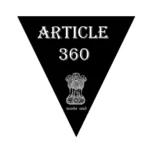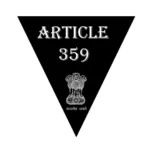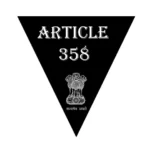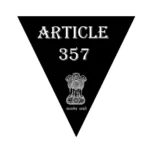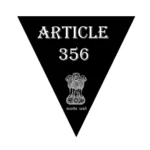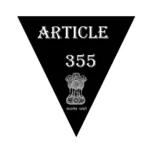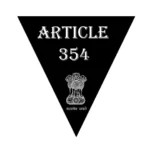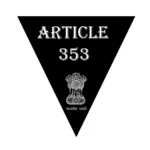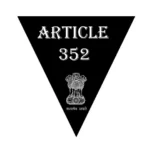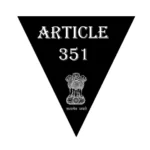In this article, we will discuss Vertical and Horizontal Reservation in a simple and easy way and try to understand its various important aspects.
In order to understand reservation, we are faced with vertical and horizontal reservation, that is why it becomes very important to understand it.
For a complete understanding of reservation, you must read the article on reservation, which is written in four parts. All the links are given below respectively.
| Reservation in India | [1/4] |
| Constitutional basis of reservation and its various aspects | [2/4] |
| Evolution of Reservation | [3/4] |
| Roster – The Maths Behind Reservation | [4/4] |
Since the entire reservation system revolves around Fundamental Rights (especially the Right to Equality), we suggest that you at least have a look at the Fundamental Rights for a better understanding.
| Reservation
Reservation is a form of positive discrimination, which is adopted to bring such a section of the society into the mainstream which has been left far behind in respect of social, economic, political or educational fields etc. . That is why any action done for this purpose is also called Affirmative Action .
Simply put, the purpose of reservation is to give preference to the marginalized sections of the society in access to employment and education.
Many historical factors have been responsible for the marginalization of certain sections of the society. With affirmative action, we try to correct those same mistakes.
Vertical and Horizontal Reservation
Even before independence, reservation is seen in different areas in one way or the other. After independence it was implemented on a large scale. Where earlier only SC and ST category got reservation in admission or appointments in Lok Sabha, Vidhan Sabha, educational institutions, from 1992 onwards arrangement was made to give reservation to OBC category also.
The reason behind giving reservation to OBCs is in the case of Indira Sawhney Vs. Government of India 1992. In the same judgment, the Supreme Court mentioned that reservation will be vertical and horizontal.
Since the Supreme Court itself had said that the upper limit of reservation would be 50%, then it was necessary that there should be some arrangement so that the total reservation up to 50% can be kept on hold.
Because if women, differently-abled and transgender etc. were also given separate reservation, then it had to be more than 50% because the total reservation for SC, ST and OBC had been 49.5%.
That is why the Supreme Court said that Not all reservations are of the same nature. There are two types of reservation, which may be referred to as ‘ vertical reservation ‘ and ‘ horizontal reservation ‘ for convenience.
Reservation in favor of Scheduled Castes , Scheduled Tribes and Other Backward Classes [under article 16(4)] may be called vertical reservation , whereas reservation in favor of physically handicapped [clause (2) of article 16] ) under] can be called horizontal.
Horizontal reservations cut across vertical reservations, which are called inter-locking reservations. Suppose 3% of the vacancies are reserved in favor of physically handicapped persons.
This reservation shall relate to clause (2) of Article 16. Persons selected under this quota; If he belongs to Scheduled Caste category, he will be placed in that quota by making necessary adjustments; Similarly, if it belongs to open competition category, then it will be placed in that category by making necessary adjustments.
Overall, even after providing these horizontal reservations, the percentage of reservation in favor of the backward class of citizens remains the same – and should remain the same.
summary
Vertical reservation means such reservation which is applicable separately to each group specified under the law. Reservation for Scheduled Castes (SC), Scheduled Tribes (ST) and Other Backward Classes (OBC) is known as vertical reservation.
Horizontal reservation is meant to provide equal opportunities to other categories of beneficiaries such as women, elderly, transgender and persons with disabilities, which cut across vertical categories.
This means to say that no separate reservation category has been created for women, transgender and differently abled, such as SC, ST and OBC have been created. That is why the reservation that women and differently-abled people get, they are not available separately, but are deducted from the quota of SC, ST and OBC.
That is, if there is a 30% reservation for women, then she will not get this reservation separately, but 30% of the seats to be filled under SC, ST and OBC quota should be women.
for understanding Suppose there are vacancies in 100 seats for each category of ST, SC and OBC. So, out of 100 seats in SC, 30 seats will be filled by women, 30 out of 100 seats for ST will be filled by women and 30 out of 100 seats in OBC will be filled by women.
Remember here that women and children get reservation under Article 15(3), while the differently-abled and transgender etc. get reservation under Article 16(2).
Q. Does Economically Weaker Section (EWS) come under the category of vertical reservation?
The way 10 percent reservation is given, it will be called vertical. Because it is also given separately and counting also goes separately. However, even in the 103rd Constitutional Amendment Act (under which it has been brought), it has not been clarified whether it will be kept in the vertical category or in the horizontal category.
This challenge has been made in the Supreme Court and till the final decision is not given, it is not right to say anything concretely. Because in the academic world, SC, ST and OBC are still placed in the vertical, not EWS, so that the upper limit of 50% can be adhered to.
If we look at Vikram Pal And Otehrs vs State Of Haryana case 2020 , even there Punjab-Haryana High Court has not counted EWS in horizontal.
An important matter related to this is Saurav Yadav versus State of Uttar Pradesh case 2020. Let us understand this;
Saurav Yadav vs State of Uttar Pradesh 2020
Sonam Tomar and Rita Rani scored 276.5949 and 233.1908 respectively. They had applied under the categories of OBC-Female and SC-Female respectively. And as we know, OBC and SC are vertical reservation categories, while women is horizontal reservation category.
It was meant to say that since Sonam Tomar is an OBC woman, she would be selected under OBC. But it happened that the number of persons to be filled under the quota of OBC were completed, that is why Sonam Tomar was not selected.
Whereas a general-female (i.e. female from unreserved category) who had scored 274.8298 marks, which was less than Sonam Tomar, but still considered as final qualified as she was a general female and for her in the general category The place was empty. Whereas both the above mentioned candidates did not qualify in their respective categories.
That is to say, the policy of the government was to restrict and keep reserved category candidates to their categories, even if they have secured higher grades.
- So, the question before the court was that if the underlying criterion for making selection is “merit”, should Sonam Tomar be selected under general-female quota instead of OBC-female category to secure higher marks?
The court ruled against the Uttar Pradesh government, holding that if a person belonging to the vertical-horizontal reserved category intersection has obtained sufficient marks to qualify without vertical reservation, the person shall be deemed to have qualified without vertical reservation. and shall not be excluded from the horizontal quota in the general category.
The court also said that if this does not happen, it is tantamount to ensuring that the general category is ‘reserved’ only for the upper castes.
| A similar question had arisen in the case of vertical reservation in the past, and the law set out similarly: If a person from the SC category scores more than the cut-off for the general category, the person will be considered for the general category. will be counted under SC quota instead.
That is the case Rajesh kumar daria vs rpsc 2020 under which it has been decided that if any SC category person scores more than the cut off marks of general category person then he/she will be considered qualified under general category.
facts
From both these cases it becomes clear that if a person who gets the benefit of reservation but brings such number which is the cut off marks for general category then that reserved person will be counted in general category.
Hope you have understood vertical and horizontal reservation. If you are finding it difficult to understand this, then I would advise that you understand reservation from zero level.
| Reservation in India | [1/4] |
| Constitutional basis of reservation and its various aspects | [2/4] |
| Evolution of Reservation | [3/4] |
| Roster – The Maths Behind Reservation | [4/4] |
References,
https://indiankanoon.org/doc/9720812/
How horizontal, vertical quotas work; what Supreme Court said
Saurav Yadav vs The State Of Uttar Pradesh on 18 December, 2020
Indira Sawhney Vs. Government of India Case 1992
Constitution of India
Commentary on constitution (fundamental rights) – d d basu
https://en.wikipedia.org/wiki/Reservation_in_India
FAQs Related to Reservation
https://dopt.gov.in/sites/default/files/FAQ_SCST.pdf

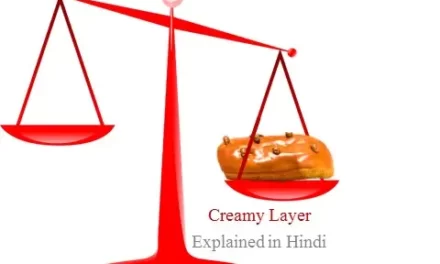

![Constitutional Basis of Reservation – आरक्षण की संवैधानिकता [2/4]](https://wonderhindi.com/wp-content/uploads/2022/02/reserved-dining-table_53876-94937-440x264.webp)

